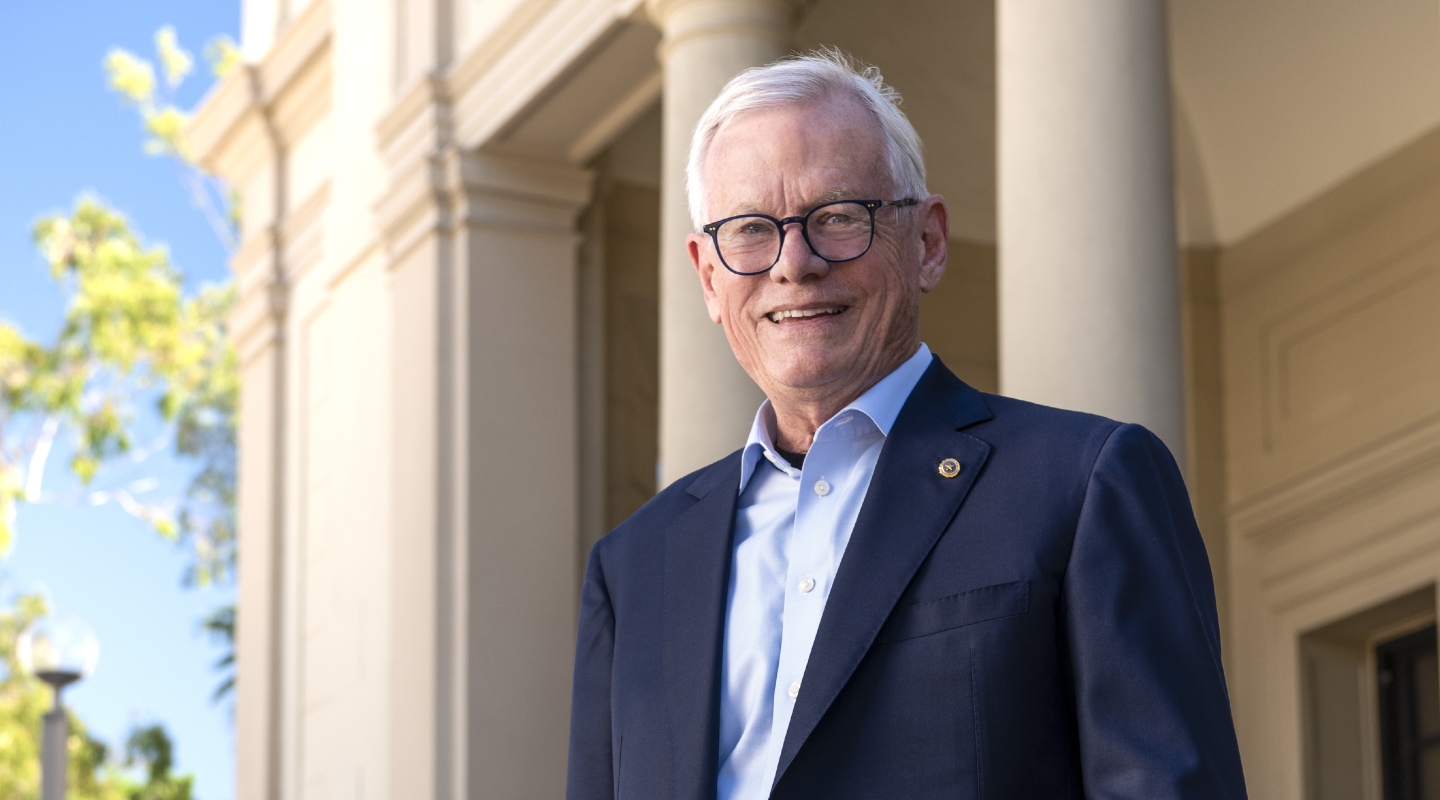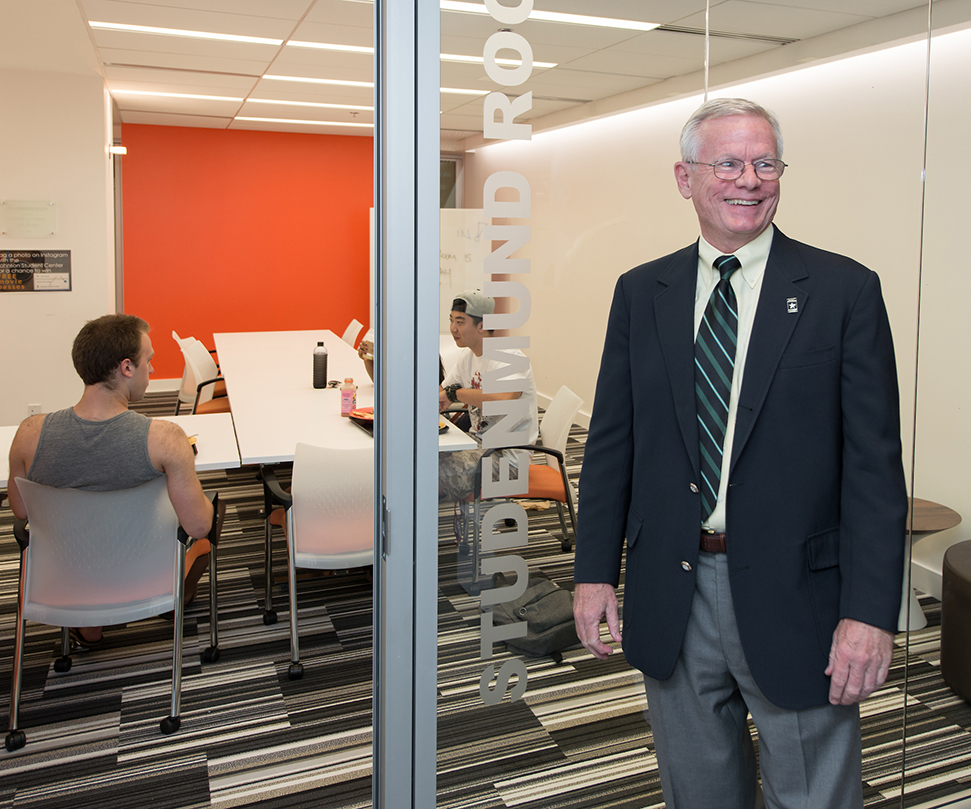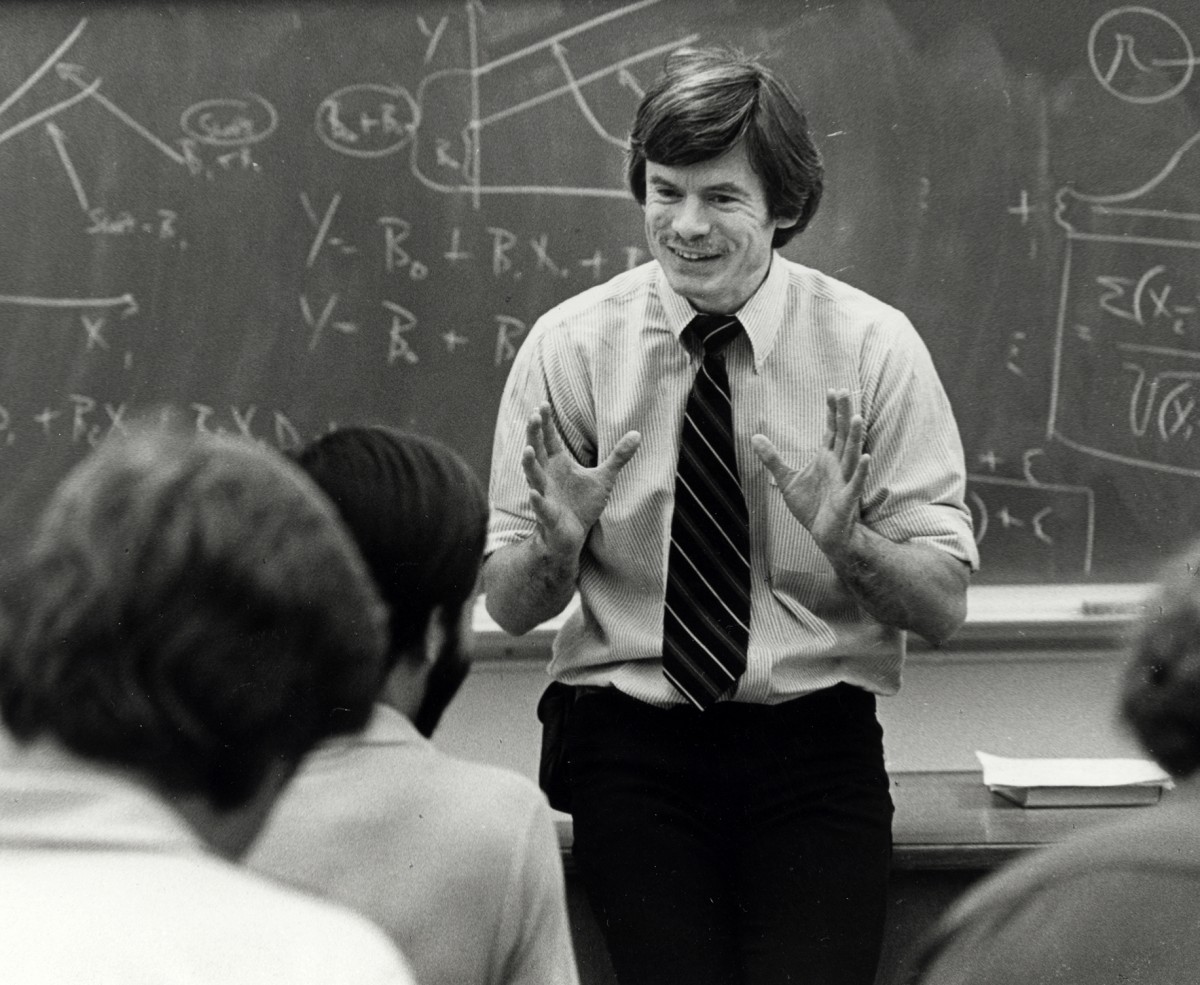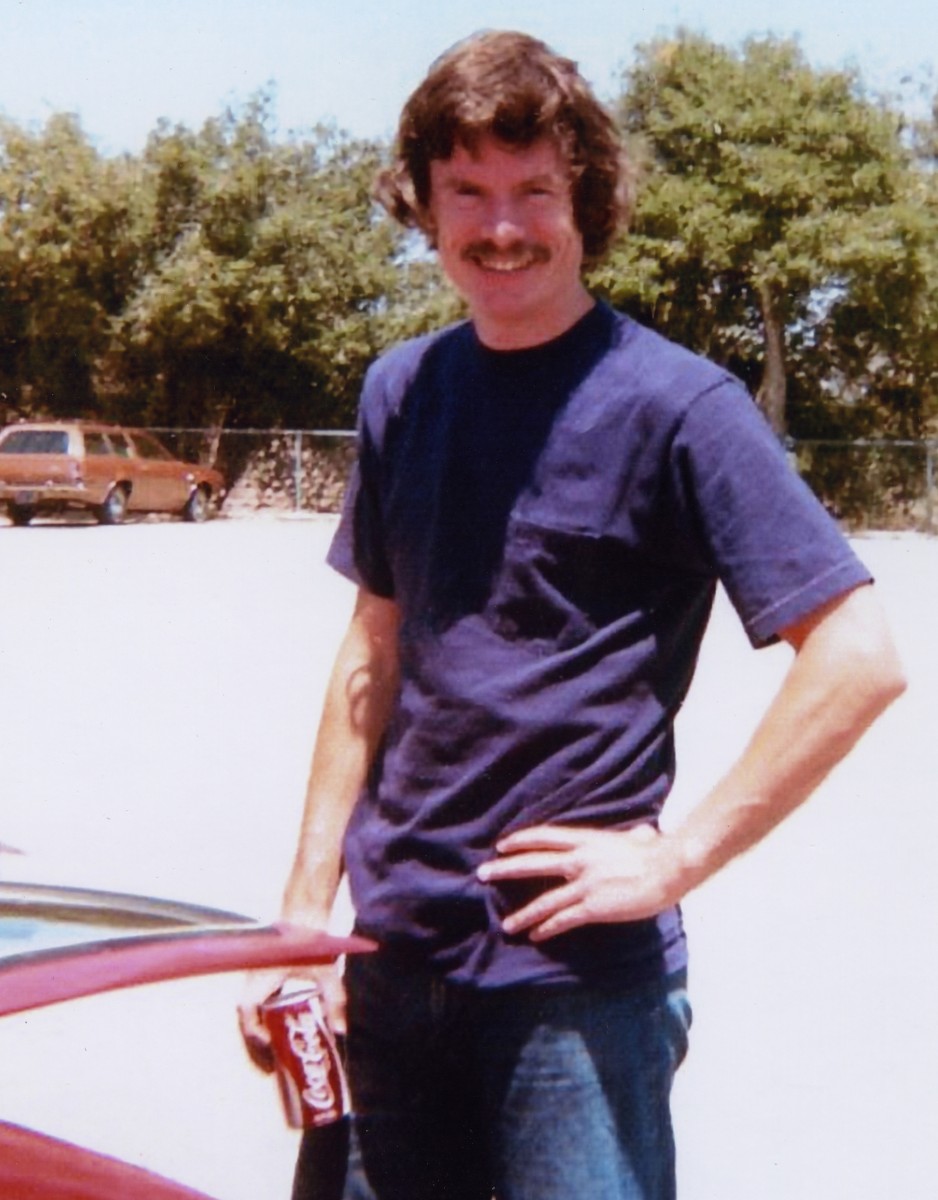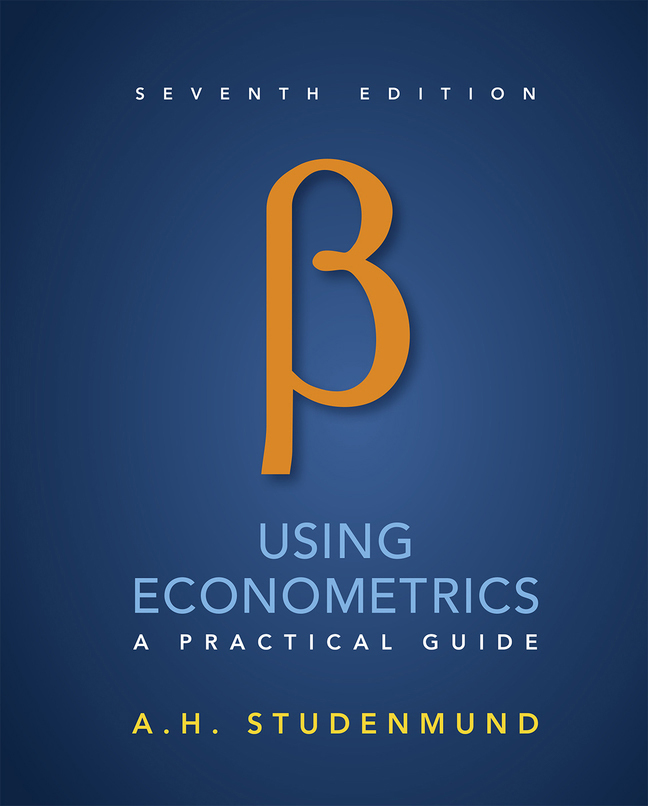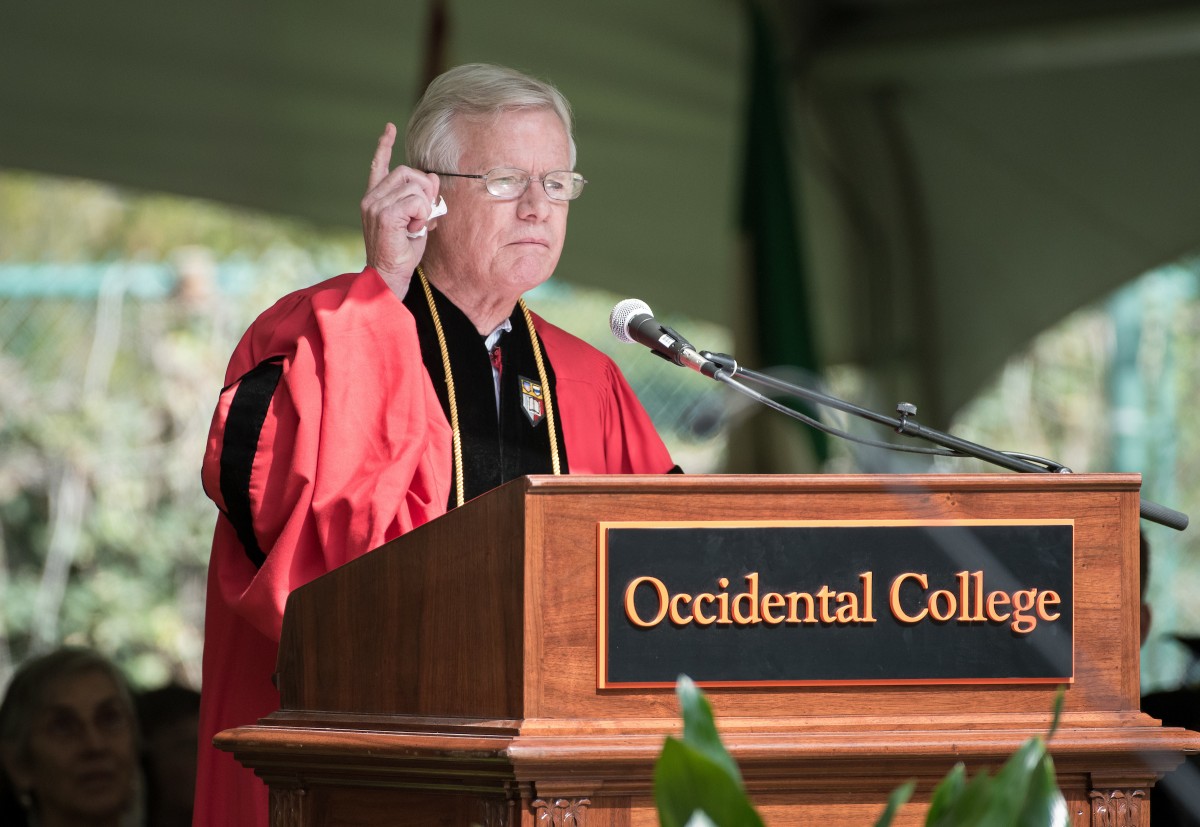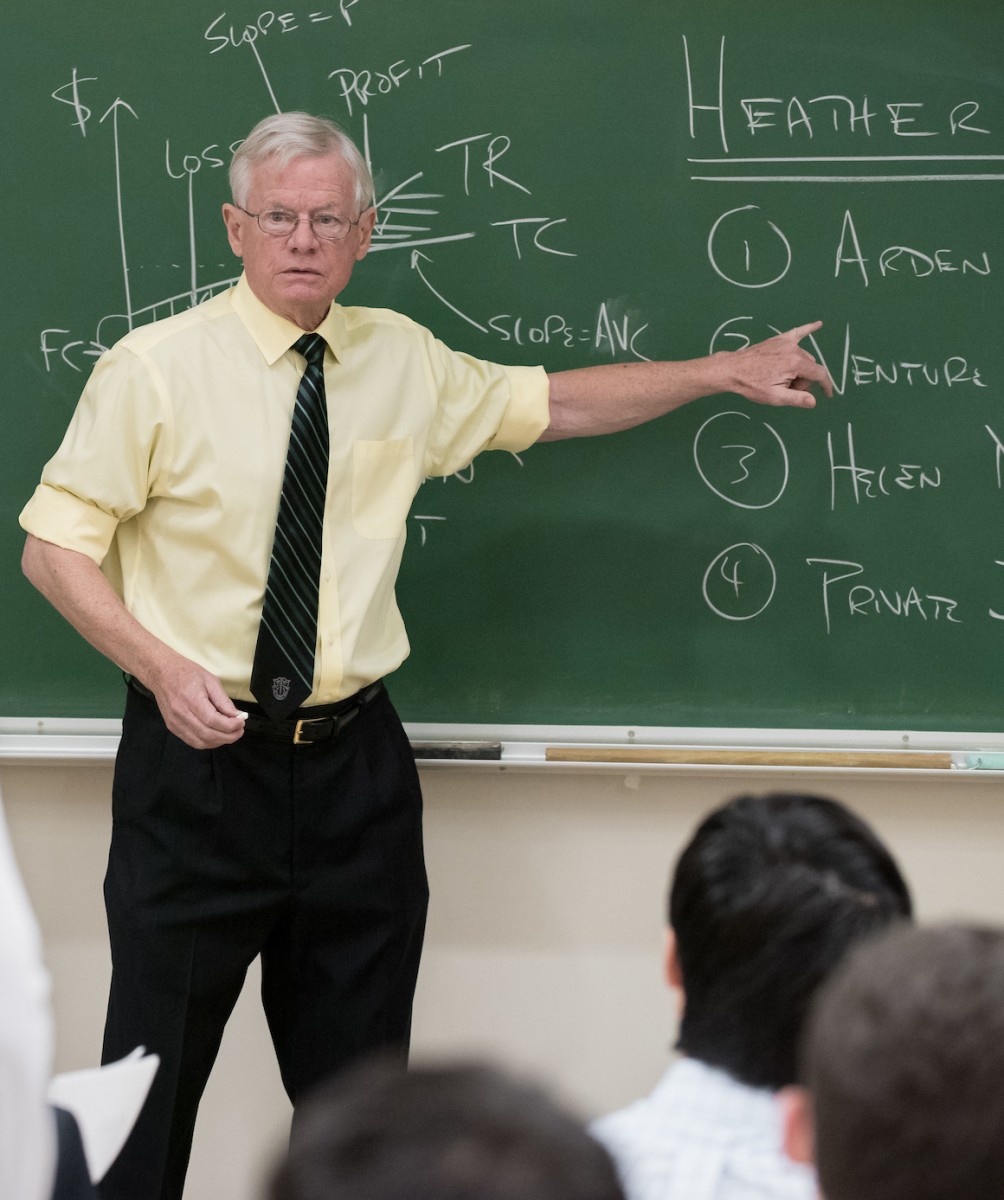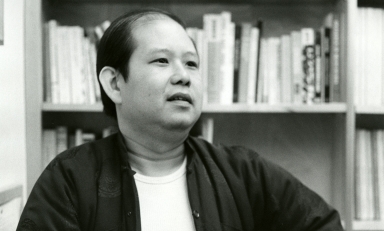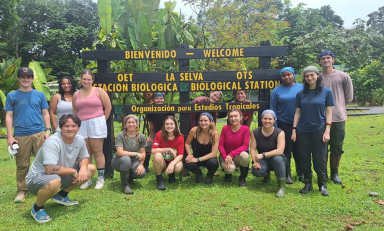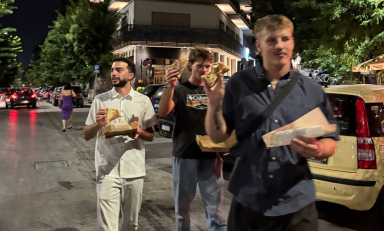Economics legend Woody Studenmund closes the textbook on a 52-year career
“This was how naive I was about the pandemic,” Woody Studenmund says. “I was teaching Econometrics in the fall of 2020—in the last few years, I taught one class a semester—and I didn’t want my last class to be remote.”
In adapting to remote learning, Studenmund converted a second garage at his home into a studio, brought in some whiteboards, and hired a crew of Oxy graduates to record his lectures. “I treated it like a regular classroom,” he says. They filmed me so that students could watch at various times and they would put in sound effects. If I told a joke, they’d add a laugh track, or if I said, ‘Let’s take a minute and think about that,’ they’d put in the Jeopardy! music while students were thinking. We tried to make it as much like a real class as we could.”
“Woody has a remarkable ability to challenge perceptions and engage students in a way that makes even the most complex topics approachable,” says economics major Alex Bozuwa ’16, who is now a program specialist with Grassroot Soccer, an adolescent health organization. “His enthusiasm for life is infectious, and his willingness to support and advocate for people is tremendous.”
Studenmund “helped shape how I try to show up in every room I enter, engage with and take an interest in people, and have joy and passion for my work,” she continues. “This has formed the base of anything I have achieved since my time at Oxy. I will be forever grateful.”
After he delivers his last Managerial Economics lecture this spring—in person, albeit to a masked assembly in Fowler Hall—what will Studenmund miss most? “The interaction with the students, obviously,” he says, “and the interaction with the faculty as well.” Just don’t text him any well wishes: “I don’t carry a cellphone,” he admits with a laugh. “That’s how old I am.”
Much has been written in these pages about the evolution of the Economics Department and its resurgence, rivaling the glory days under 1917 graduate John Parke Young and Laurence De Rycke. A tiger’s share of the credit must go to Studenmund, who first became department chair in 1975 (and was named the De Rycke Distinguished Professor of Economics in 2007). “For a while I was the only tenure-track professor,” he recalls. “I had a chance to build the department from scratch, so I set out to hire the very best teaching economists I could find.”
By the mid-1980s, when the College’s most popular major was economics and the enrollment of women at Oxy began to outnumber men, Studenmund realized that he was “replicating the problems” of his predecessors in constructing an all-white male faculty. “To truly offer a good education to a broad group of students, we had to have a diverse group of faculty,” he says, “and today I would claim we’re the most diverse econ department at any coed institution in the country. Just as impressively, we continued to attract superb teachers as well, because it was easier to attract people to our department when they saw how successful we were.”
“Woody has had a profound effect on shaping and growing our department to the success it is today,” says Lesley Chiou, professor of economics and current department chair. “He has influenced countless generations of students and faculty by being a tireless advocate for their education and growth.”
A native of Cooperstown, N.Y., Arnold Harwood Studenmund is named for his uncle, his mother’s only brother and a lieutenant and fighter pilot in the Navy, who died following a midair collision in June 1944, less than four months before Studenmund’s birth. “My family made up ‘Woody’ as a nickname because they could not bear to call me by my actual first name—it reminded them of the man who was killed in the war,” he says.
Even after his family moved to Cresskill, N.J., Studenmund spent most of his summers in Cooperstown, home of the National Baseball Hall of Fame and Museum. He lived two doors down from the hall’s director and played baseball “nearly every day” on Doubleday Field. “Back then, there was an annual Hall of Fame game,” he adds, “and kids could run on the field with their programs between innings and try to get players’ autographs, which was exciting.”
As a child, Studenmund learned to add and subtract even before he could read and write, and he spent three years as a math major at Hamilton College before switching to economics. The deeper he got into his studies, he says, “My econ classes took more aim at applying theory to the real world, and that became attractive to me.”
Over the next decade, Studenmund coached Oxy’s sprinters in their off-season workouts. He also organized a women’s distance running club, working with Oxy’s first national-class women’s track athlete, Pam Morris ’79, who would compete in three separate Olympic Trials.
In 1972, the ever-youthful professor was even cast as an extra in the Disney movie The World’s Greatest Athlete, which filmed its track sequences at Cal State L.A. “The filmmakers took one look at me and they decided I was a javelin thrower from Brigham Young,” Studenmund says. “If you look in slow motion, you can see me for about a tenth of a second.”
Having conquered the silver screen, Studenmund dipped his toes into the textbook industry in 1976, publishing the first of eight editions of Coursebook for Economics with Dryden Press. That would set the table for an even bigger foray into publishing, one that grew organically out of his Econometrics class.
“I started off writing a chapter for my students to replace one chapter in the book we were using, which was a famous econometrics text. The next year I wrote a second chapter, and I submitted those chapters to four publishers.”
In 1983, on sabbatical from Oxy, Studenmund was called to Washington, D.C., to work with the Federal Home Loan Bank Board to help with the savings and loan crisis (“You can tell how much help I was—we didn’t fix it”). It was in the Office of Policy and Economic Research that he met Henry Cassidy, the board’s director of general research and a professor at George Mason University, who had written an econometrics textbook that had not sold particularly well. In reading Cassidy’s book, “He had the right approach,” Studenmund says. And then an idea came to him: “If I added in examples, exercises, and practical stuff to his theory, the two combined would be a good text.”
When Studenmund returned to Oxy, he spent nearly two full years working on the first edition of the 440-page book. “My wife, Jaynie, was working long hours at a very difficult job, so I got a carrel in the library away from everybody and just cranked away on the book,” he recalls. “We would both get home around 8 or 9 p.m., have some dinner, and go to bed.”
Using Econometrics: A Practical Guide was published in 1986 to modest initial sales. Over the next three years, however, sales increased year over year—defying the typical textbook sales trajectory, where the first year is the best before the used-book market eats into demand. Following the publication of the second edition in 1991, with Studenmund as the sole author, “We were probably the No. 1 seller in elementary econometrics,” he says.
The seventh edition of Using Econometrics came out in 2016. The textbook remains a steady seller, and “we’re talking about an eighth,” Studenmund says. “Econometrics is an evolving field, so if a new technique came in, I wouldn’t put it in the book right away, except maybe as a footnote, until it became used by a majority of economists.” Conversely, he notes, “There’s a technique called generalized least squares, which used to be our top approach toward a particular econometric problem. Now it’s a footnote in the book.”
On the night of June 9, 2014, the unthinkable happened when 24-year-old U.S. Army Special Forces Staff Sgt. Scott Studenmund—Jaynie and Woody’s son—was among five U.S. soldiers killed in Afghanistan, the victims of “friendly fire” from a U.S. Air Force bomber. Scott was buried a month later at Arlington National Cemetery in Virginia alongside fellow Green Beret and Staff Sgt. Jason A. McDonald, 28, who also was killed in the incident.
Studenmund returned to teaching that fall, coming into the Fowler Hall classroom “with boundless energy, enthusiasm, and patience to teach us,” Kate Johnstone ’15 recalls. In accepting a posthumous honorary degree awarded to Scott from President Jonathan Veitch at Commencement in May 2015, Studenmund said: “I firmly believe that if each American did one more thing to solve our country’s problems, we could have the country for whose aspirations Scott was willing to die.”
“What I was pointing out was our government killed these soldiers—Green Berets, people who had three years of intensive training—because of a mistake,” he explains. “That’s what the story was about. I felt if I talked about Scott from the perspective of a sad parent, the show would be pulled away from its true purpose.”
The response to the 60 Minutes story—which was seen by about 8 million viewers—was “overwhelming,” Studenmund says, with hundreds of emails and phone calls after the broadcast. “I caught up with people I hadn’t talked to in a long time. They all said more or less the same thing—that they were proud that I had done it and sad that it had happened.
“It’s not difficult to do something if you think it’s the right thing to do,” he continues. “I was doing what I had to do—the same thing that Scott did charging up that hill.”
In November 2014, Clairbourn School in San Gabriel renamed its athletic field the Scott Studenmund Field, and two years later, Flintridge Preparatory School dedicated a memorial wall honoring four individuals, including Scott, for their lives and contributions. For 37 years, Woody was faculty adviser to the student-run Blyth Fund—and a former student who is now an entrepreneur is trying to set up a fund at the University of Hawai‘i at Mānoa, similar to the Blyth Fund, named after Scott.
Of the many administrative roles Studenmund has held over his time at Oxy, the one he says he enjoyed the most was dean of admission and financial aid during the 1996-97 academic year. In the face of dire financial straits and a declining student population, Studenmund and his team were tasked with matriculating a larger-than-average class while maintaining the College’s standards.
“In my year, we brought in 440 students”—up from 270 the previous year—“which is my favorite number, because that’s the race I ran in track,” he says. The Class of 2001 also enjoyed one of the highest graduation rates in recent memory: “Not only was it a large class, it was a successful one.”
In addition to the prospect of an eighth edition of his textbook—“That’ll keep me busy”—Studenmund has a long list of things he’s looking forward to doing in retirement, from cruises and other travel to spending more time with his family.
He also will continue to coach soccer as an assistant at Flintridge Prep, having first worked with daughter Connell’s team years ago (he also coached baseball and track for the school for a number of years). “Our soccer team has won seven consecutive league championships,” Studenmund notes, “but even if we lost, it’d still be fun. It keeps me young.”
‘He brought out the best in all of us’
Brad Fauvre ’87: It’s amazing that I sit here writing this tribute to Professor Woody Studenmund 35 years after I have graduated. Woody epitomizes my view of the value of Oxy as a liberal arts institution. He focused first on teaching his principle of critical thinking in his given field, for which he had just authored our econometrics textbook, constantly challenging and engaging us in class—not by telling us the correct answer but by showing us how to develop a logic to solve a problem that you needed to be able to defend verbally. He seemed to know when you were a little unprepared or slacking off, and would zero in on you with a tough question. We all quickly learned to be on our game in Woody’s class because we didn’t want to disappoint him.
I credit Woody with helping me choose my first job, with encouraging me to pursue graduate school, and with teaching me to never be satisfied with the minimum acceptable outcome. What am I missing? What is the second- or third-order mechanism here? How will I communicate this effectively, verbally or in writing? His rigor in teaching instilled in me a continual desire to learn that stays with me today. I am forever grateful for Woody’s impact on me and the College, and I know that his example will inform the curriculum and spirit of teaching at Oxy for 52 more years at least.
Fauvre is president of Velocity Vehicle Group in Whittier and a past president of the Occidental College Alumni Board of Governors.
Kate Johnstone ’15: Before I ever had him as a professor, I knew Woody by his first name—everyone in the Economics Department did. This approachability is a key part of what makes Woody such an impactful and influential person in so many of his students’ lives. His energy was infectious, and he could make a subject that seemed boring on its surface into one of the most interesting courses I took in college. While he had high expectations for his students, he dedicated extensive time and energy outside of the classroom to help us meet those expectations.
For all of the important knowledge that I gained from taking Econometrics, Managerial Economics, and an independent study course with him, I think a lot of the lessons I learned from Woody that have influenced my life, and will continue to do so, came from his confidence in me as one of his students and from observing his incredible character.
Woody has been an advocate for women in leadership roles, actively encouraging the relatively small group of women in our Managerial Economics class to imagine ourselves in leadership roles at companies or firms. He has continued his effort to encourage more women to join the Economics Department and pursue careers in business.
Although with a smile he urged me to consider business school rather than law school, he wrote my law school recommendation letter and helped me achieve my goal of becoming a lawyer. He has a strong passion for helping students achieve the potential he sees in them, and that dedication to mentorship has made me strive to be a better mentor to people in my life.
For all the lessons I learned from Woody about economics and careers, I think the most important one was also the most simple: Lead with confidence and positivity (even when life isn’t going your way), and others will do the same.
Johnstone is an associate at Latham & Watkins in Los Angeles.

